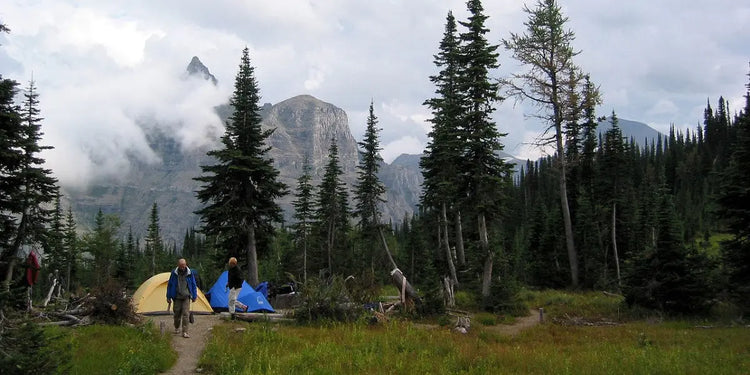Selecting a backcountry campsite boils down to three key factors: Safety, Leave No Trace, and Comfort. In the following, I will elaborate on each of these aspects and provide some tips to ensure you consistently discover optimal campsites.
When it comes to backcountry camping, the selection of a campsite is a critical decision that hinges on three key factors: Safety, Leave No Trace, and Comfort. In this blog post, we will delve into each aspect and provide valuable tips to ensure you always discover an ideal campsite.
Safety First
Backcountry camping entails its fair share of challenges, and safety should always be a top priority. By taking basic precautions, smart campers can prevent injuries and accidents. Here are some areas to avoid when choosing a campsite:
- Cliffs and Steep Slopes: These areas pose a high risk of rock falls and avalanches, especially during rainfall.
- Gorges: Flash flooding is a serious concern in gorges, making them unsuitable for camping.
- High Water Mark: If near a body of water, stay well above the high water mark to avoid potential flooding.
- Depressions, Valleys, and Low-Lying Areas: Water tends to accumulate in these areas, posing a risk of flooding your tent.
- Trees with Dead Branches: Known as "widowmaker trees," these can fall and cause harm, so avoid camping near them.
Leave No Trace
The Leave No Trace principle emphasizes minimizing the impact on nature and respecting fellow campers. To adhere to this principle when selecting a campsite:
- Choose Existing Campsites: Utilize existing campsites whenever possible.
- Pitch on Sandy or Compact Ground: If no established campsite exists, opt for sandy or compact ground.
- Avoid Fragile Areas: Steer clear of fragile ecosystems like alpine meadows.
- Maintain Distance from Water Sources: Stay at least 200 feet away from water sources to protect fragile plant life and wildlife access.
- Stay 200 Feet from Trails: Respect other campers and hikers by keeping a distance from trails.
- Exceptions to the 200 Feet Rule: If an existing campsite is near water or a trail (while still above the high water mark), use it to avoid creating a new site.
Comfort Matters
While safety and Leave No Trace are paramount, considering your comfort is crucial. Pay attention to the wind, seek natural wind breaks like tree clusters, and consider the position of the sun for shade. A good night's sleep depends on a comfortable campsite.
Tips for Success
- Allocate Ample Time: Finding the perfect backcountry campsite takes time. Budget at least an hour for the search, and if you find a suitable spot early on, pitch your tent promptly.
- Scout the Area: Before committing to a site, put your gear down and explore the vicinity. Avoid the mistake of settling for a "good-enough" site when an even better one might be just a short walk away.
By considering safety, Leave No Trace principles, and personal comfort, you can enhance your backcountry camping experience and leave a positive impact on the environment. Happy camping!



